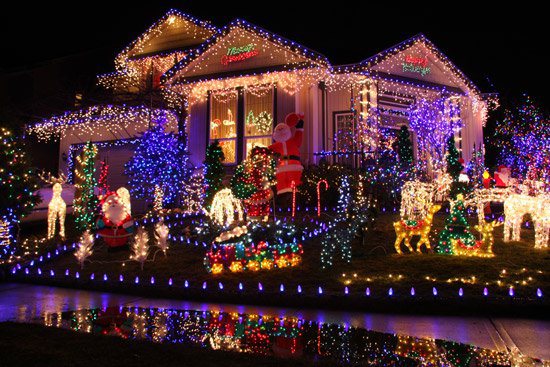Now that you have light lines custom-built for your Christmas lighting project, you’ll want to install them neatly and with precision. You can do that by using the same installation aids that professional installers use: an assortment of purpose-built clips.
Plan on using one clip per bulb socket, even for light lines with the closest bulb spacing. And choose the correct clip for the surface to which you’re attaching your line. Clips are available for attaching to:
· Clay roof tiles
· Wood or asphalt shingles
· Flashing
· Roof ridge rows
· Gutters
· Trees and shrubs
· Smooth, flat surfaces (wood, metal or plastic)
· Artificial foliage (trees, wreaths, garlands, sprays)
· Brick
· Ferrous metal (magnetized clips)
· Concrete and brick surfaces
With the proper attachment hardware, your custom light line installation will be quick and easy, and will yield a professional look.
Professional-Looking Results for Do-It-Yourselfers
Most professional installers build their own custom light lines because doing so saves them money and results in superior displays. That makes customers happier and contributes to long-term business success.
But there’s no reason that the advantages of build-it-yourself light lines should be limited to professional installers. After all, you don’t need to be a professional to achieve professional looking results; you just need to know the how-to-do-it 1-2-3 process for building your own light lines.
And now you do.
You can find everything you need to customize your own light lines from any reputable Christmas lighting supplier in your area or online, including Christmas Designers, the site where this author works.










